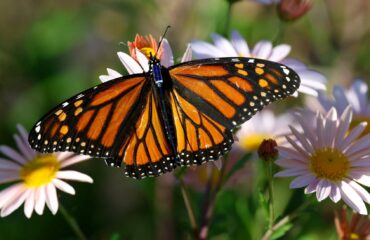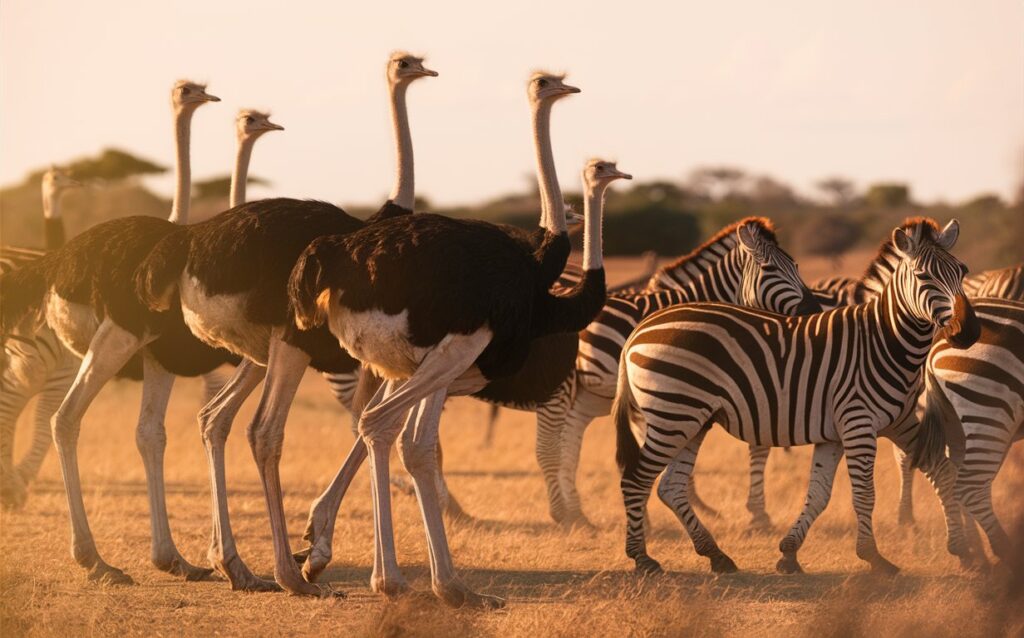
Zebras and ostriches engage in a symbiotic relationship in the wild, where the keen eyesight of ostriches complements the strong sense of smell and hearing of zebras. Image generated using Ideogram AI.
By Mariana Meneses
At Yellowstone National Park, researchers have discovered a fascinating correlation in nature.
Led by Connor J. Meyer and Kira A. Cassidy, from the Yellowstone Wolf Project, the scientists found that grey wolves (Canis lupus) infected with the parasite Toxoplasma gondii are significantly more likely to assume leadership roles within their packs and exhibit higher dispersal rates, behaviors that increase their exposure to potential dangers.
This unusual form of parasitic influence, aimed at enhancing the parasite’s chances of transmission to its primary feline hosts (pumas in this case), underscores a complex interaction where the parasite subtly alters the host’s behavior to fulfill its reproductive needs, illustrating a unique form of mutualism that blurs the lines between parasitism and mutual benefit in nature.
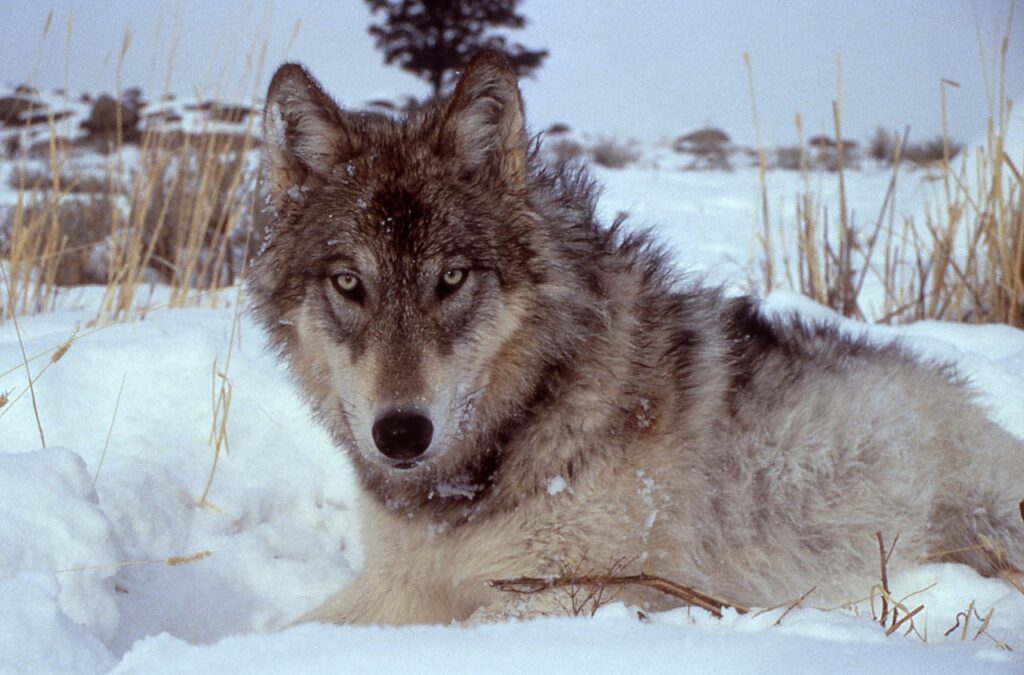
Wolf at Yellowstone National Park. Image: Doug Smith
Another fascinating symbiotic relationship recently discovered is between the green alga Chlamydomonas and certain bacteria, revealing complex ecosystem dynamics. The discovery advances understanding of the mechanisms at work at the most fundamental levels of the natural environment, holding promise for improved management of the Earth’s ecosystems, new medicines, and other technologies.
What makes a symbiotic relationship among bacteria so significant?
While they are incredibly small, they are among the earliest forms of life on Earth, descending from ancient unicellular organisms. Contrary to common belief, bacteria are not multicellular but single-celled organisms. The leap from unicellular to multicellular life is a major milestone in evolution, and single-celled bacteria have played a crucial role in the development and evolution of multicellular organisms.
Every human body is host to an astounding number of bacteria, estimated to be in the trillions. These bacteria are essential to our survival, playing a crucial role in processes such as digestion.
While some bacteria, like Pseudomonas, harm Chlamydomonas by secreting toxins, others, such as Mycetocola lacteus, provide protection and aid in its growth. Mycetocola receives essential nutrients from the alga and, in return, breaks down harmful compounds produced by Pseudomonas, preventing disruption of calcium levels in the algal cells. This allows the algae to remain mobile and evade threats, highlighting the critical role of microbial interactions in maintaining ecosystem health and balance.
Understanding such symbiotic relationships holds broader significance due to its implications for environmental health and sustainability.
First and foremost, these microorganisms play crucial roles in global ecosystems by contributing to processes like CO2 fixation and food webs, ultimately improving the air we breathe and the food we eat. By uncovering how certain bacteria can both harm and protect these algae, scientists gain insights into the delicate balance of life in our environment.
This knowledge can inform strategies for managing ecosystems, mitigating harmful algal blooms, and even potentially developing novel biocontrol methods for agricultural pests or pathogens. Additionally, as our understanding of microbial interactions grows, so does the potential for solutions inspired by biology in fields ranging from medicine to renewable energy.
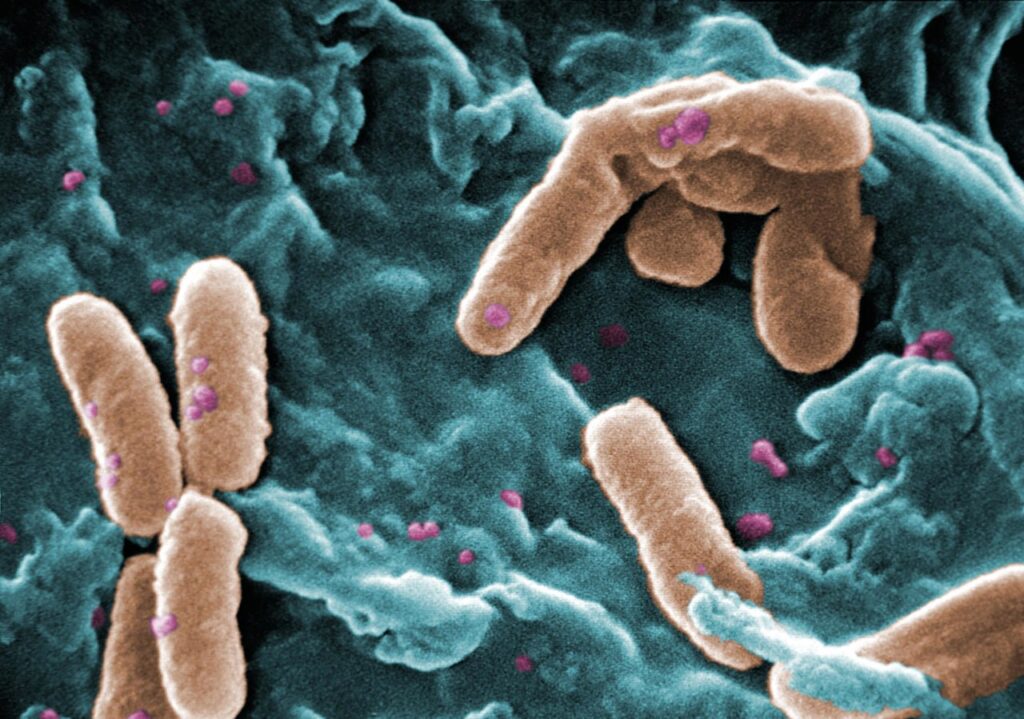
“Because of their widespread occurrence in water and plant seeds such as dicots, the pseudomonads were observed early in the history of microbiology” (Wikipedia). Image: Janice Haney Carr
In nature, many species form tight bonds for mutual benefit.
This kind of teamwork is called mutualism, where both parties gain something positive. Emily Osterloff, for the Natural History Museum, gives interesting examples.
Take, for instance, gobies and pistol shrimps who share a burrow and look out for each other against predators. Aphids and ants also have a deal: ants get a sweet treat from aphids’ honeydew, and in return, they protect aphids from danger. Even bats and pitcher plants team up: bats find shelter in the plants while providing them with valuable nutrients. And let’s not forget coral and algae, whose partnership keeps coral reefs thriving.
Oxpeckers and large mammals, like zebras, have a symbiotic bond too; oxpeckers feast on parasites while giving their hosts a heads-up on danger. Clownfish and anemones are another classic duo, where clownfish stay safe in the anemone’s tentacles, and in return, they clean the anemones and bring them food. Greater honeyguides guide humans to beehives, and together they share the spoils. And then there are senita moths pollinate senita cacti and help them thrive by only eating a fraction of their fruit. These examples show how teamwork can make a big difference in nature.
The Odd Couple: Goby Fish & Pistol Shrimp | Omar Badr Films
A specific example recently discussed by Animal-World is the symbiotic relationship of Zebras and ostriches in the wild, where the keen eyesight of ostriches complements the strong sense of smell and hearing of zebras.
Ostriches, being the tallest and heaviest birds, detect threats from afar and alert zebras, while zebras utilize their heightened senses to detect dangers that may be unseen. This collaborative effort significantly reduces individual risks, showcasing the benefits of interspecies cooperation and highlighting the intricate balance of ecosystems. Although not strictly dependent on each other, zebras and ostriches rely on each other’s strengths to compensate for their own weaknesses, enhancing their chances of survival. This partnership exemplifies how diversity in abilities within ecosystems fosters enhanced survivability for all involved.
A 2024 paper, by Ning Zhang an co-authors, delves into the fascinating relationship between two species: the rosy bitterling fish and the Chinese pond mussel.
These creatures engage in a mutually beneficial arrangement, where the bitterling use the mussel as a safe place for their offspring to grow, while the mussels’ larvae hitch a ride on the bitterling to disperse. Scientists wanted to understand if this mutualism also brings indirect benefits, particularly in terms of protection from predators. They conducted experiments, observing how the bitterling reacted to different chemical cues released by mussels at various stages of their lives.
Interestingly, they found that adult bitterling, especially when reproducing, showed stronger responses to these cues, suggesting they might be gaining extra protection from predators by associating closely with mussels during this stage. This study sheds light on the complex dynamics of mutualistic relationships in nature, showing that these interactions can vary over time and across different life stages, providing valuable insights into how species interact and support each other in the wild.
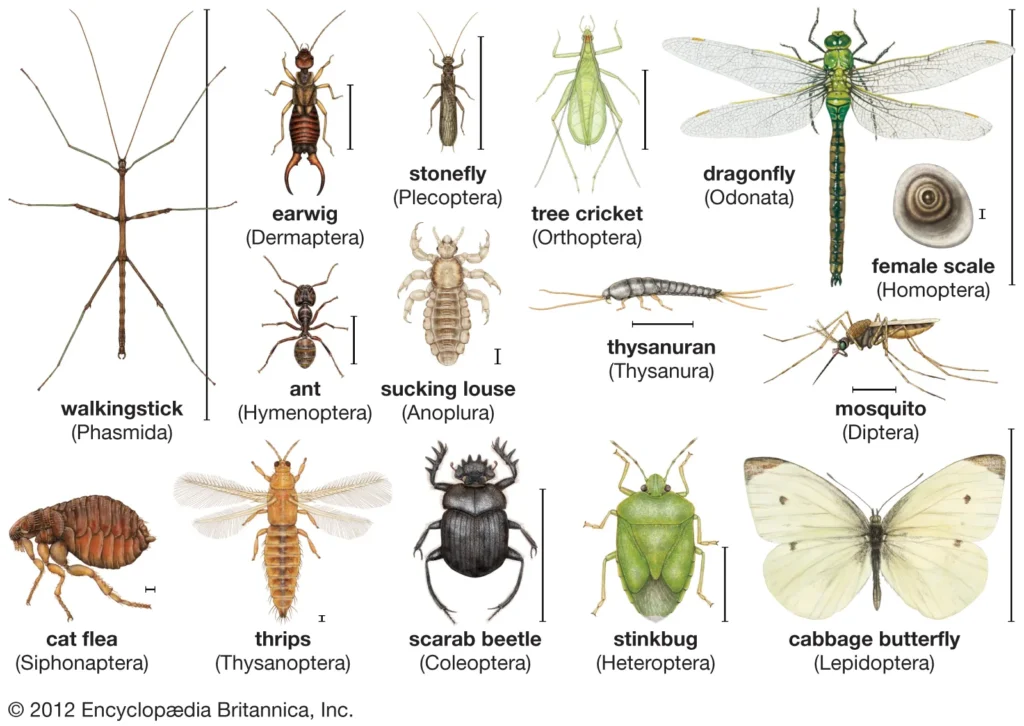
Image: Britannica
Other recent research dives into the fascinating world of symbiotic relationships between insects and tiny organisms called obligate endosymbionts.
These little partners have a huge impact on the bodies and lives of their insect hosts, influencing everything from their physiology to their ecological roles, and even playing a significant role in their evolution and diversification. The study focuses on a specific group of sap-feeding insects called Auchenorrhyncha, which includes cicadas, spittlebugs, and others. Some of these insects are notorious for spreading plant diseases, making them important subjects of study. The researchers explore the diversity of these obligate endosymbionts within Auchenorrhyncha, showing how they’ve evolved over time through processes like replacements, acquisitions, and losses.
They also examine the mechanisms that maintain these long-term associations between insects and their symbionts, highlighting the intricate ways in which the two depend on each other for survival. Additionally, the study looks at how disrupting these associations could potentially be a novel strategy for controlling these insect pests. Overall, this research provides valuable insights into the complex interactions between insects and their associated microbes, shedding light on fundamental aspects of both ecology and evolution.
“Replacements, acquisitions, and losses” describe the dynamic processes through which obligate endosymbionts change within insect populations over time.
Replacements occur when one type of endosymbiont is supplanted by another, possibly due to environmental changes or genetic mutations that make the new symbiont more beneficial for the insect host. Acquisitions refer to the process where insects acquire new endosymbionts, often through horizontal transmission from the environment or other hosts. Losses happen when insects completely lose their endosymbionts, which may result from environmental shifts or genetic mutations that make the symbiotic relationship unnecessary or disadvantageous.
These processes highlight the evolving nature of symbiotic relationships within ecosystems.
Birds + Capybaras = BFFs | Animalogic
A 2024 study by Ivan Sazima and co-authors sheds light on yet another fascinating ecological relationship between birds and capybaras, the world’s largest rodents, and its implications for biodiversity.
The study reveals how certain birds, including the yellow-headed caracara, black vulture, Southern caracara, smooth-billed ani, and cattle tyrant, have a mutually beneficial partnership with capybaras. These birds help rid the capybaras of ticks and botfly larvae, gaining food in return. However, the research highlights a concerning trend: in a particular urban reserve in Brazil, this symbiotic relationship has collapsed due to the disappearance of capybaras. The decline in capybara numbers, partly triggered by human intervention such as culling, led the remaining capybaras to adapt nocturnal habits, disrupting the birds’ ability to access them during the day. Over time, this disturbance resulted in the disappearance of capybaras from the reserve entirely, causing the loss of the mutualistic interaction with the tick-picking birds.
This extinction not only signifies a loss of biodiversity but also alters the ecosystem dynamics, emphasizing the interconnectedness of species and the delicate balance within ecosystems.
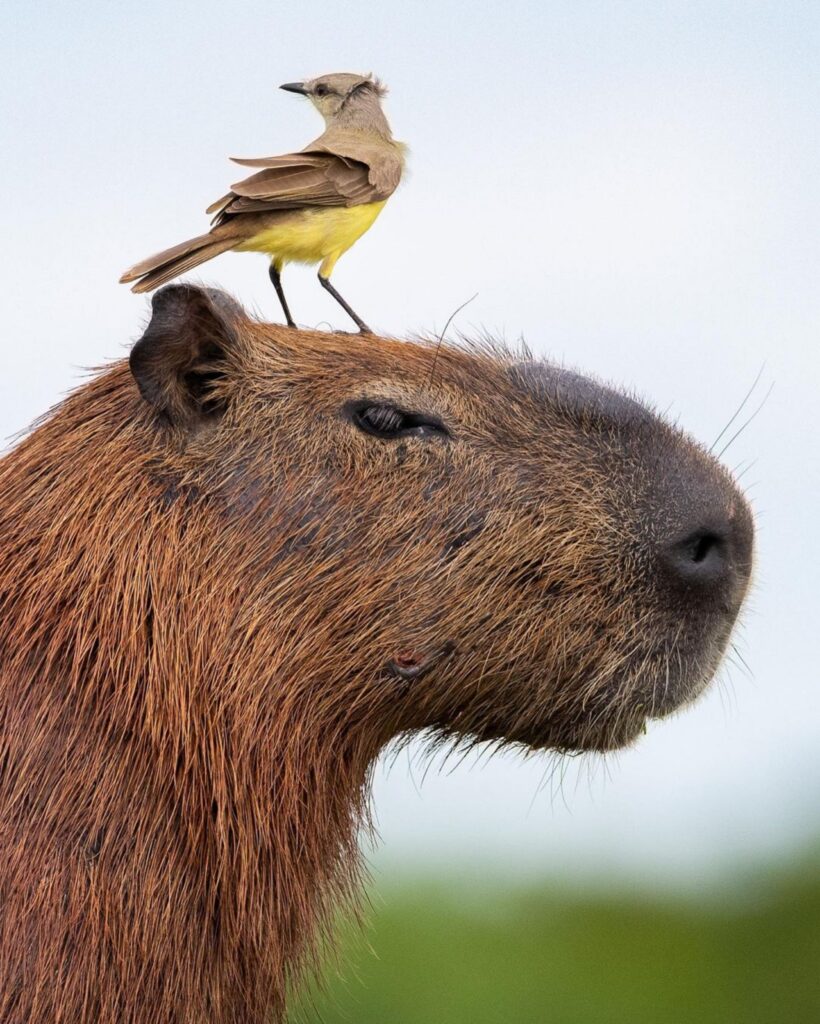
Image of a capybara and bird: Vecteezy
The loss of biodiversity has numerous deleterious consequences for humanity’s sustainability on Earth, including the loss of genetic material and associated knowledge transmission.
For another example, check out this edition’s article on the Bajau People, which discusses how the erosion of biodiversity undermines the transfer of knowledge over time, crucial for adapting to environmental changes.
Craving more information? Check out these recommended TQR articles:
- How Many Languages Are There? Scientists Shed Light on What Animals Other Than Humans are Saying
- From Nature to Robots and Vice-Versa? Blurring the Lines Between the Real and the Virtual
- New Insights Reveal Unexpected Patterns in Evolution of Humans and Other Species
- Indigenous Knowledge Integrates Science and Nature for Greater Sustainability
- Life Is Defined by Biology, Not Physics


